.jpg)
The SAP Cloud ALM for Implementation (CALM20) course provides in-depth training on managing SAP implementation projects using SAP’s next-generation cloud-based ALM platform. Participants learn to plan, execute, and monitor end-to-end project lifecycles, including requirements, tasks, testing, and deployment aligned with SAP Activate methodology. The course emphasizes integration with SAP Central Business Configuration, agile project governance, and KPI-based tracking. It empowers consultants and project managers to ensure efficient, compliant, and transparent SAP S/4HANA Cloud implementation across diverse enterprise environments.
SAP Cloud ALM for Implementation CALM20 Training Interview Questions Answers - For Intermediate
1. How does SAP Cloud ALM support SAP S/4HANA Cloud implementation projects?
SAP Cloud ALM is designed to streamline SAP S/4HANA Cloud implementations by providing preloaded Activate methodology content and best-practice templates. It automatically aligns project structures, milestones, and deliverables with SAP’s standard deployment approach. The integration with SAP Central Business Configuration (CBC) allows synchronization of scope items, process flows, and configuration activities, ensuring that implementation teams maintain traceability from blueprinting to go-live.
2. What is the purpose of Scoping in SAP Cloud ALM?
Scoping helps define the functional and process boundaries of an implementation project. Within SAP Cloud ALM, it enables project teams to select relevant business processes, countries, and localizations based on business requirements. This ensures that only necessary content and activities are loaded into the project, minimizing effort and focusing resources on high-impact areas.
3. Explain how Traceability is maintained across project phases in SAP Cloud ALM.
Traceability in SAP Cloud ALM is achieved through end-to-end linking of requirements, tasks, test cases, and defects. Each element is connected to ensure visibility from business requirement to system configuration and testing. This comprehensive linkage allows teams to monitor implementation progress, verify coverage, and confirm that all deliverables align with stakeholder expectations.
4. What is the role of User Stories in SAP Cloud ALM?
User Stories are used to describe specific business needs in a simplified, actionable format. In SAP Cloud ALM, they are linked to requirements and implementation tasks to ensure functional delivery aligns with user expectations. By applying agile methodologies, user stories help teams manage incremental delivery, prioritize development, and continuously adapt to changing requirements.
5. How can SAP Cloud ALM be customized to fit organizational workflows?
Although SAP Cloud ALM provides predefined templates, organizations can tailor task lists, workflows, and notifications to align with internal project management frameworks. Teams can create custom roles, modify task dependencies, and integrate third-party tools for enhanced collaboration. This flexibility ensures that the tool adapts to unique operational models without compromising SAP best practices.
6. What is the benefit of the Process Flow Viewer in SAP Cloud ALM?
The Process Flow Viewer provides a visual representation of business processes, helping project teams understand interdependencies among tasks and applications. It illustrates how different process steps connect across functional modules. This visualization aids in impact analysis, facilitating informed decision-making when process changes or enhancements are introduced during implementation.
7. How does SAP Cloud ALM handle multiple project roles and authorizations?
SAP Cloud ALM uses a role-based access control (RBAC) system, ensuring that each user has appropriate permissions based on their responsibilities. Roles like Project Manager, Application Expert, and Test Manager come with specific authorizations for task creation, approval, and testing. This structured approach enhances governance, accountability, and security during project execution.
8. Describe the use of KPIs in SAP Cloud ALM project tracking.
Key Performance Indicators (KPIs) in SAP Cloud ALM are used to measure project progress, task completion, test coverage, and defect resolution efficiency. These metrics are displayed in dashboards for real-time monitoring. By continuously evaluating KPIs, project managers can identify bottlenecks early, allocate resources more effectively, and ensure adherence to timelines.
9. What are Deployments and how are they managed in SAP Cloud ALM?
Deployments represent the controlled release of solution configurations into productive systems. SAP Cloud ALM allows teams to define deployment waves, link them to change requests, and track transport packages. The platform ensures that each deployment is validated through test results and approvals, reducing the likelihood of production issues post-implementation.
10. How does SAP Cloud ALM ensure transparency in change management?
SAP Cloud ALM records every change related to requirements, configurations, and transports within its audit trail. It provides visibility into who initiated changes, when they occurred, and what their business impact is. This transparency ensures compliance with change governance policies and helps avoid unauthorized or untracked modifications during implementation.
11. How can SAP Cloud ALM be integrated with SAP Business Technology Platform (BTP)?
SAP Cloud ALM integrates seamlessly with SAP BTP to manage extensions, integrations, and API-based developments. It allows tracking of integration artifacts, managing lifecycle activities for BTP services, and testing end-to-end connectivity between SAP S/4HANA Cloud and external systems. This integration ensures smooth orchestration between application development and deployment activities.
12. What is the significance of Continuous Improvement in SAP Cloud ALM?
Continuous Improvement in SAP Cloud ALM focuses on refining processes based on feedback and project analytics. Teams can analyze post-go-live performance, monitor incidents, and identify opportunities for optimization. By learning from implementation outcomes, organizations can apply insights to future projects, enhancing overall delivery efficiency and quality.
13. How does SAP Cloud ALM support hybrid project landscapes?
SAP Cloud ALM supports hybrid environments by integrating both cloud and on-premise SAP systems. It provides unified monitoring, requirement management, and test orchestration across different landscapes. This capability ensures consistent governance, even when projects involve SAP S/4HANA Cloud, SAP SuccessFactors, and legacy on-premise systems within the same enterprise.
14. Explain how Defect Management works in SAP Cloud ALM.
Defect Management in SAP Cloud ALM allows users to capture, categorize, and resolve issues encountered during testing. Each defect is linked to its related test case and requirement, ensuring complete visibility of its impact. Automated workflows route defects to responsible teams, while dashboards track open and resolved issues for quality assurance oversight.
15. What best practices should organizations follow when adopting SAP Cloud ALM for Implementation?
Organizations should begin with clear role definitions, align their project with SAP Activate phases, and leverage standard templates before customizing workflows. Regularly reviewing KPIs and maintaining documentation within the system enhances governance. Additionally, providing user training and ensuring integration with SAP Central Business Configuration are key to maximizing the platform’s value during implementation.
SAP Cloud ALM for Implementation CALM20 Training Interview Questions Answers - For Advanced
1. How does SAP Cloud ALM for Implementation align with SAP’s overall Cloud Application Lifecycle Management (CALM) strategy?
SAP Cloud ALM for Implementation is one of the two core pillars of SAP’s CALM strategy, complementing SAP Cloud ALM for Operations. It provides the foundational layer for managing cloud and hybrid SAP projects from discovery to go-live. The tool embodies SAP’s philosophy of delivering lifecycle management as a cloud service—automated, scalable, and continuously updated. It integrates with other SAP systems such as SAP Central Business Configuration, SAP Business Technology Platform (BTP), and SAP S/4HANA Cloud to provide a unified experience. The strategic goal is to enable customers to adopt SAP cloud solutions faster, maintain system integrity across upgrades, and ensure smooth transitions from project execution to operational excellence, reducing total cost of ownership (TCO) and time-to-value.
2. How does SAP Cloud ALM enable traceability between business requirements and technical configurations?
Traceability in SAP Cloud ALM is achieved through a structured linkage model that connects business requirements, project tasks, process steps, test cases, and configuration items. Each requirement is logged in the system and associated with its implementation activities and technical artifacts in SAP Central Business Configuration (CBC). When configurations or process changes are applied, SAP Cloud ALM automatically maintains version control, enabling teams to view the relationship between what was requested and what was delivered. This traceability helps audit teams verify compliance with change management policies, ensures that all requirements are fulfilled, and provides visibility into the business impact of configuration changes—a critical aspect in regulated industries like finance, life sciences, and public services.
3. How does SAP Cloud ALM facilitate end-to-end testing in an integrated SAP landscape?
SAP Cloud ALM provides a centralized testing environment that covers all types of testing, including unit, integration, regression, and user acceptance testing (UAT). It integrates with SAP Solution Manager Test Suite and automation tools such as Tricentis Tosca, enabling both manual and automated test execution. Each test case is mapped to its corresponding requirement and business process, ensuring full coverage and traceability. The platform’s orchestration engine schedules test cycles, records execution results, and generates analytics on test coverage, defects, and performance metrics. In integrated SAP landscapes involving multiple systems (S/4HANA, SuccessFactors, Ariba, etc.), SAP Cloud ALM coordinates testing across these environments, ensuring that inter-system dependencies and integrations are validated before deployment.
4. Explain the architectural components of SAP Cloud ALM and how they work together.
The architecture of SAP Cloud ALM consists of three primary layers: the application layer, data layer, and integration layer. The application layer hosts project management, requirements, testing, and deployment modules accessible via a web-based interface. The data layer stores project metadata, audit logs, and configuration details in SAP’s secure hyperscaler-based infrastructure. The integration layer connects SAP Cloud ALM to other SAP and non-SAP systems using REST APIs, event-driven webhooks, and SAP Business Technology Platform (BTP) services. These components collectively ensure real-time data exchange, scalability, and security. The architecture’s modularity also allows for continuous innovation, with SAP delivering quarterly updates and enhancements without downtime or manual patching.
5. How does SAP Cloud ALM assist in maintaining compliance with industry regulations during project implementation?
Compliance management is built into SAP Cloud ALM through features such as role-based access control, audit trails, task approvals, and traceability matrices. Every activity—from requirement creation to deployment—is automatically logged with timestamps and user details, ensuring accountability. SAP Cloud ALM also provides templates and documentation aligned with industry standards like ISO 27001, SOC, and GDPR. Its ability to maintain end-to-end traceability supports external audits, as organizations can demonstrate adherence to regulatory frameworks. The integration with SAP Identity Access Management (IAM) and segregation-of-duties checks further strengthen compliance by ensuring that no single user can execute conflicting actions within the implementation workflow.
6. What is the importance of Business Process Monitoring during implementation in SAP Cloud ALM?
Business Process Monitoring (BPM) within SAP Cloud ALM allows project teams to validate that configured processes perform as intended even before go-live. During implementation, BPM metrics provide insights into process efficiency, execution frequency, and potential bottlenecks. For example, if a sales order processing flow takes longer than expected during testing, BPM highlights the performance deviation, allowing early corrective action. By simulating real-time process flows, BPM ensures that each configured process meets functional and performance standards. This capability bridges the gap between configuration and operational readiness, making it a key factor in achieving a successful and stable go-live.
7. How does SAP Cloud ALM integrate with SAP Signavio and SAP Solution Manager?
SAP Cloud ALM integrates with SAP Signavio for business process modeling and optimization and with SAP Solution Manager for hybrid project continuity. Signavio provides advanced process design and simulation capabilities, while SAP Cloud ALM handles execution and tracking. Process models from Signavio can be imported into SAP Cloud ALM, linking design intent to actual implementation. For customers transitioning from SAP Solution Manager, migration utilities help transfer project data, test scripts, and documentation into SAP Cloud ALM. This seamless integration ensures that organizations retain their ALM maturity while moving to a modern, cloud-native environment that supports both agile and traditional methodologies.
8. How can KPIs in SAP Cloud ALM be customized to measure project performance effectively?
SAP Cloud ALM provides default KPIs covering areas such as task completion rate, test coverage, defect density, and requirement fulfillment. However, advanced users can customize KPIs to align with organizational goals. Using SAP Analytics Cloud (SAC) integration, teams can define custom metrics—such as resource utilization, configuration change velocity, or sprint velocity—and visualize them in interactive dashboards. Filters and hierarchies allow performance tracking at team, project, or module levels. This customized KPI framework enables decision-makers to monitor health, identify risks early, and ensure that project execution aligns with both business value and technical milestones.
9. What role does transport management play in SAP Cloud ALM for Implementation?
Transport management in SAP Cloud ALM ensures that configuration and code changes are deployed in a controlled and auditable manner. The system integrates with SAP Cloud Transport Management Service (TMS), enabling the orchestration of transport requests between development, quality assurance, and production environments. Each transport is linked to its originating requirement and task, ensuring end-to-end traceability. The platform supports release waves, where groups of transports are bundled, tested, and approved collectively. This reduces deployment risk and ensures alignment between technical changes and business objectives. Automated status updates and rollback mechanisms further strengthen change governance in complex SAP landscapes.
10. How does SAP Cloud ALM promote collaboration among globally distributed teams?
SAP Cloud ALM facilitates collaboration by providing centralized access to project information, real-time updates, and contextual discussions. The platform allows team members from different geographies to view, comment, and share progress on tasks, requirements, and test cases. Notifications and subscriptions keep all stakeholders informed of changes or dependencies. Integrated document management enables attachment of blueprints, design documents, and test evidence directly within tasks. Additionally, API-based integration with Microsoft Teams or Slack supports instant communication. This collaboration ecosystem helps reduce miscommunication, accelerates decision-making, and ensures that distributed teams work cohesively toward common project goals.
11. What are some of the major challenges organizations face when adopting SAP Cloud ALM for Implementation, and how can they be mitigated?
Common challenges include change resistance from users accustomed to SAP Solution Manager, limited awareness of ALM capabilities, and inadequate alignment of project methodologies. These can be mitigated through structured enablement programs, early stakeholder engagement, and establishing a governance board to oversee adoption. Organizations should start with a pilot project to familiarize teams with SAP Cloud ALM functionalities before scaling. Integrating SAP Activate methodology from the outset ensures structured execution.
12. How does SAP Cloud ALM enable automated documentation and audit readiness?
SAP Cloud ALM automatically generates and maintains documentation for every project artifact, including requirements, configurations, test cases, and deployments. Each object includes metadata such as author, timestamps, status, and associated dependencies. These records can be exported or directly shared during audits to demonstrate compliance with governance frameworks. Audit logs track all system changes and approvals, ensuring full traceability. Additionally, by linking documentation to business processes, SAP Cloud ALM provides a comprehensive audit trail that simplifies internal and external reviews. This automation reduces manual effort, enhances accuracy, and ensures organizations remain perpetually audit-ready.
13. How is scalability achieved within SAP Cloud ALM for large enterprise programs?
Scalability in SAP Cloud ALM is achieved through its cloud-native architecture, which leverages SAP’s hyperscaler infrastructure (AWS, Azure, or Google Cloud). The platform supports multi-project and multi-tenant management, allowing enterprises to run hundreds of parallel implementations under a single governance structure. Load balancing and auto-scaling mechanisms ensure optimal performance even with thousands of users and millions of records. Custom roles, segregated workstreams, and template-driven rollouts make it possible to handle global programs efficiently. The ability to standardize and replicate project templates across business units significantly accelerates global adoption and reduces redundancy.
14. How does SAP Cloud ALM handle defect lifecycle management in large and dynamic projects?
The defect lifecycle in SAP Cloud ALM follows a structured progression from identification to resolution. When defects are logged during testing, they are automatically categorized by severity, priority, and impact area. Each defect is assigned to the responsible team and linked to its test case and requirement. The workflow supports automatic notifications, status tracking, and resolution verification. Dashboards display open, closed, and recurring defects for management visibility. Integration with external ticketing tools like ServiceNow ensures that defects are addressed across interconnected systems. This disciplined defect lifecycle ensures that no critical issues are overlooked, safeguarding project quality and timeline adherence.
15. In what ways does SAP Cloud ALM enhance the transition from implementation to operations?
SAP Cloud ALM provides a seamless handover from implementation to operations by maintaining continuity of data, configurations, and monitoring setups. Once a project reaches go-live, the same environment transitions into SAP Cloud ALM for Operations, which inherits process and system monitoring parameters from the implementation phase. This eliminates the need for manual setup and ensures operational teams have full visibility into the deployed solution. KPIs, test histories, and documentation remain accessible, enabling faster root cause analysis during incidents. This unified lifecycle approach minimizes downtime, ensures accountability across phases, and establishes a continuous improvement loop from project execution to long-term system optimization.
Course Schedule
| Dec, 2025 | Weekdays | Mon-Fri | Enquire Now |
| Weekend | Sat-Sun | Enquire Now | |
| Jan, 2026 | Weekdays | Mon-Fri | Enquire Now |
| Weekend | Sat-Sun | Enquire Now |
Related Courses
Related Articles
Related Interview
Related FAQ's
- Instructor-led Live Online Interactive Training
- Project Based Customized Learning
- Fast Track Training Program
- Self-paced learning
- In one-on-one training, you have the flexibility to choose the days, timings, and duration according to your preferences.
- We create a personalized training calendar based on your chosen schedule.
- Complete Live Online Interactive Training of the Course
- After Training Recorded Videos
- Session-wise Learning Material and notes for lifetime
- Practical & Assignments exercises
- Global Course Completion Certificate
- 24x7 after Training Support


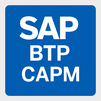
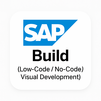
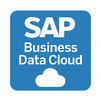
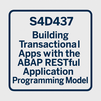
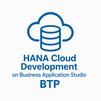
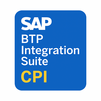
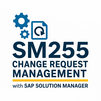
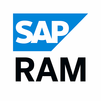

 Join our Live Instructor-Led online classes delivered by industry experts
Join our Live Instructor-Led online classes delivered by industry experts